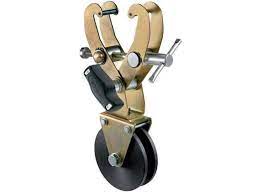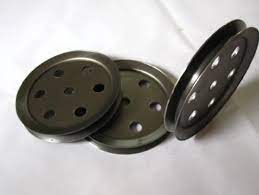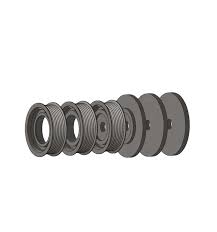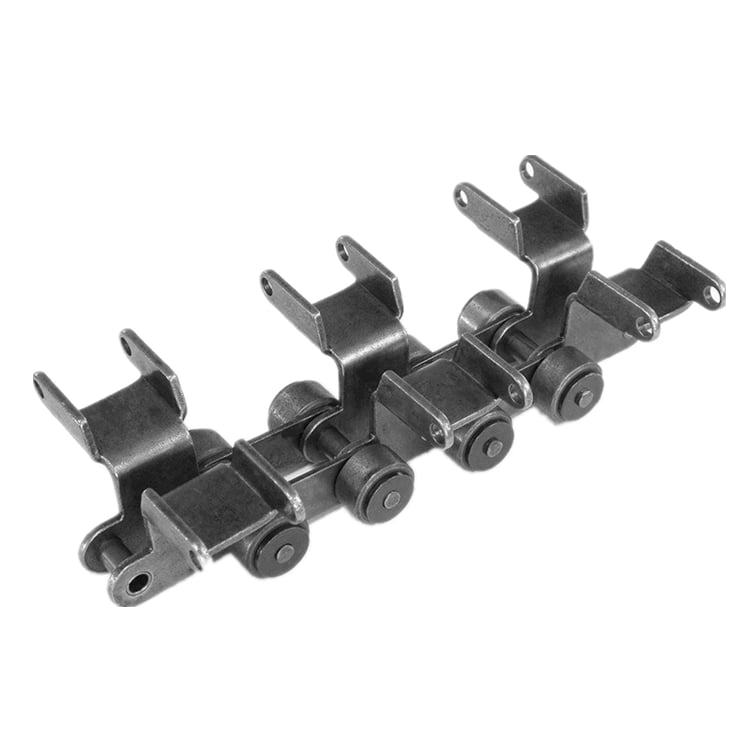Product Description
pulley spacer spring speed reducer bushing pto belt idler mini chain sheave Spinning taper cast sheaves and pulleys wheel wire driven brass metal multiple
What is taper cast pulleys?
A taper-lock pulley is a type of pulley that has a tapered bore that fits CHINAMFG a tapered shaft. This type of pulley is commonly used with V-belts, as the tapered bore helps to ensure that the belt stays in place and does not slip.
Taper-lock pulleys are typically made of cast iron or aluminum. They are available in various sizes and styles, so you can find 1 that fits your needs.
Taper-lock pulleys are a reliable and efficient way to transmit power. They are easy to install and maintain, and they are available in a variety of sizes and styles.
Here are some of the benefits of using taper-lock pulleys:
- They are a reliable and efficient way to transmit power.
- They are easy to install and maintain.
- They are available in a variety of sizes and styles.
If you want a reliable and efficient way to transmit power, taper-lock pulleys are a great option.
Application of taper cast pulleys
Taper-lock pulleys are used in a variety of applications, including:
- Automotive engines: Taper-lock pulleys are used in automotive engines to transmit power from the crankshaft to the accessories, such as the alternator, water pump, and power steering pump.
- Air conditioning: Taper-lock pulleys are used in air conditioning systems to transmit power from the engine to the compressor.
- Conveyor belts: Taper-lock pulleys are used in conveyor belts to transmit power from the motor to the belt.
- Other machines: Taper-lock pulleys are also used in other machines, such as generators and pumps.
Taper-lock pulleys are a reliable and efficient way to transmit power. They are easy to install and maintain, and they are available in a variety of sizes and styles.
Here are some of the benefits of using taper-lock pulleys:
- They are a reliable and efficient way to transmit power.
- They are easy to install and maintain.
- They are available in a variety of sizes and styles.
If you want a reliable and efficient way to transmit power, taper-lock pulleys are a great option.
Here are some additional details about the applications of taper-lock pulleys:
- Automotive engines: In automotive engines, taper-lock pulleys are used to transmit power from the crankshaft to the accessories, such as the alternator, water pump, and power steering pump. The taper-lock bore on the pulley ensures that the belt stays in place and does not slip, even under high loads.
- Air conditioning: In air conditioning systems, taper-lock pulleys are used to transmit power from the engine to the compressor. The compressor is responsible for circulating refrigerant throughout the system, which cools the air inside the vehicle.
- Conveyor belts: In conveyor belts, taper-lock pulleys are used to transmit power from the motor to the belt. The belt moves material along the conveyor, such as boxes or pallets.
- Other machines: Taper-lock pulleys are also used in other machines, such as generators and pumps. In generators, taper-lock pulleys are used to transmit power from the engine to the generator, which produces electricity. In pumps, taper-lock pulleys are used to transmit power from the motor to the pump, which moves fluids.
Taper-lock pulleys are a versatile and reliable way to transmit power. They are easy to install and maintain, and they are available in a variety of sizes and styles. If you are looking for a way to transmit power, taper-lock pulleys are a great option.
/* January 22, 2571 19:08:37 */!function(){function s(e,r){var a,o={};try{e&&e.split(“,”).forEach(function(e,t){e&&(a=e.match(/(.*?):(.*)$/))&&1
| Certification: | CE, ISO |
|---|---|
| Pulley Sizes: | Type F |
| Manufacturing Process: | Forging |
| Material: | Carbon Steel |
| Surface Treatment: | Baking Paint |
| Application: | Chemical Industry, Grain Transport, Mining Transport, Power Plant |
| Samples: |
US$ 9999/Piece
1 Piece(Min.Order) | |
|---|
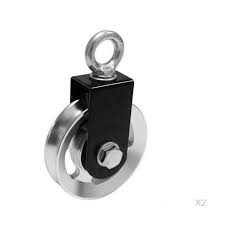
How are spinning pulleys customized for specific machinery and equipment?
Spinning pulleys can be customized to suit the specific requirements of machinery and equipment. Here’s an overview of the customization process and the factors involved:
1. Design Considerations:
Customizing spinning pulleys begins with a careful assessment of the machinery or equipment’s operational needs and constraints. Design considerations include factors such as power requirements, rotational speed, torque specifications, space limitations, and environmental conditions.
2. Material Selection:
The choice of material for spinning pulleys depends on the application’s demands. Common materials include metals like steel or aluminum for their strength and durability. Other factors considered during material selection include corrosion resistance, weight, cost, and specific industry requirements.
3. Pulley Geometry:
The geometry of the spinning pulley is tailored to the machinery’s requirements. This involves determining the pulley’s diameter, width, groove shape (V-shaped, flat, round), and the number of grooves (for multiple belt systems). The dimensions and shape of the pulley are optimized to ensure proper belt tracking, tension, and grip.
4. Shaft Compatibility:
Customized spinning pulleys need to be compatible with the machinery’s shaft or spindle. This involves considering factors such as shaft diameter, keyway specifications, and mounting requirements. The pulley is designed to securely fit onto the shaft and facilitate efficient power transmission.
5. Belt or Rope Compatibility:
The spinning pulley must be compatible with the type and size of the belt, rope, or cable used in the system. Factors such as belt width, thickness, and material (rubber, fabric, steel) are taken into account. The pulley’s groove dimensions and shape are optimized to ensure proper belt fit and prevent slippage.
6. Surface Treatment:
In some cases, spinning pulleys may undergo surface treatments to enhance their performance or address specific requirements. Surface treatments can include coating, plating, or heat treatment processes to improve wear resistance, reduce friction, or provide protection against environmental factors like corrosion or extreme temperatures.
7. Quality Assurance:
Customized spinning pulleys undergo rigorous quality assurance processes to ensure they meet the desired specifications and performance standards. This may involve testing for dimensional accuracy, material strength, balance, and overall functionality. Quality control measures are implemented to deliver reliable and high-quality pulleys.
8. Collaboration with Manufacturers:
Customizing spinning pulleys often involves collaboration between machinery manufacturers and pulley suppliers or manufacturers. The manufacturers work closely with the machinery designers or engineers to understand the specific requirements and provide customized solutions that align with the machinery’s overall design and performance objectives.
By considering these factors and collaborating with manufacturers, spinning pulleys can be customized to fit seamlessly into specific machinery and equipment, ensuring optimal power transmission, reliability, and longevity.
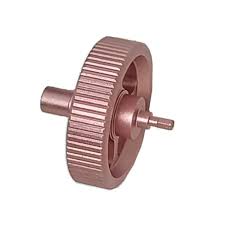
What safety considerations should be kept in mind when working with spinning pulleys?
Working with spinning pulleys requires careful attention to safety to prevent accidents or injuries. Here are some important safety considerations to keep in mind:
1. Personal Protective Equipment (PPE):
Wear appropriate PPE, such as safety glasses, gloves, and protective clothing, to protect yourself from potential hazards like flying debris, pinch points, or entanglement.
2. Lockout/Tagout Procedures:
Before performing any maintenance or adjustment tasks on systems or machinery involving spinning pulleys, follow lockout/tagout procedures to isolate the power source and prevent unexpected startup or movement.
3. Proper Installation and Maintenance:
Ensure that spinning pulleys are properly installed, aligned, and maintained according to manufacturer instructions. Regularly inspect for wear, damage, or misalignment and address any issues promptly.
4. Belt Tension and Alignment:
Maintain proper belt tension and alignment to prevent belt slipping or derailment. Improper tension or alignment can cause sudden movement or dislodgment of the belt, leading to potential accidents.
5. Guarding and Enclosures:
Install appropriate guards or enclosures around spinning pulleys to prevent accidental contact with moving parts. This helps to minimize the risk of entanglement or injury.
6. Training and Knowledge:
Ensure that individuals working with spinning pulleys have received proper training and are knowledgeable about the associated hazards and safe operating procedures. This includes understanding emergency shutdown procedures and knowing how to respond to potential incidents.
7. Clear Work Area:
Maintain a clean and uncluttered work area around spinning pulleys to reduce the risk of trips, falls, or inadvertent contact with moving parts.
8. Power Isolation:
When performing maintenance or repair tasks, ensure that the power supply to the system or machinery is completely isolated to prevent accidental startup or movement.
9. Follow Manufacturer Guidelines:
Adhere to the manufacturer’s specific guidelines and recommendations for the safe use and operation of spinning pulleys. Manufacturers often provide safety instructions and precautions that are specific to their products.
10. Risk Assessment:
Conduct a thorough risk assessment of the task or system involving spinning pulleys to identify and mitigate potential hazards. Consider factors such as speed, torque, pinch points, and entanglement risks.
Remember, safety should always be a priority when working with spinning pulleys. By following these safety considerations and using common sense, you can minimize the risk of accidents and create a safer working environment.
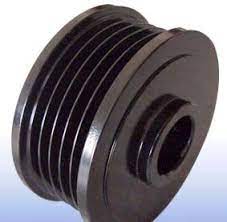
How does the rotation speed and diameter of a spinning pulley impact its performance?
The rotation speed and diameter of a spinning pulley have a significant impact on its performance. Let’s explore how these factors influence its operation:
1. Rotation Speed:
The rotation speed of a spinning pulley refers to the number of revolutions it makes per minute (RPM). The speed at which the pulley rotates affects the overall system performance in the following ways:
– Power Output: A higher rotation speed generally results in higher power output from the pulley. It allows for faster energy transfer and can be advantageous in applications where rapid operation or high-speed performance is required.
– Heat Generation: Increased rotation speed can lead to higher levels of heat generation due to friction between the pulley and the belt, rope, or cable. Proper cooling mechanisms or materials with high-temperature tolerance may be necessary to manage the heat effectively.
– Wear and Tear: Higher rotation speeds can accelerate the wear and tear of the pulley and the power transmission components. It may require more frequent maintenance and replacement of parts to ensure continued reliability and performance.
2. Diameter:
The diameter of a spinning pulley refers to the size of its cross-sectional circle. The diameter influences the performance of the pulley in the following ways:
– Torque Output: A larger pulley diameter allows for higher torque output. Torque is the rotational force exerted by the pulley, and a larger diameter pulley provides a mechanical advantage, enabling the transfer of more torque to driven components.
– Rotational Speed: A smaller pulley diameter results in higher rotational speed. It allows for faster rotational motion but typically reduces the torque output. Smaller diameter pulleys are suitable for applications that require high-speed operation with lower torque requirements.
– Belt Tension: The diameter of the pulley affects the tension of belts, ropes, or cables connected to it. Larger pulley diameters generally require less tension to achieve reliable power transmission, while smaller pulley diameters may necessitate higher tension to prevent slippage.
– Space Constraints: The physical dimensions of the spinning pulley, including its diameter, need to be considered in systems with limited space. Smaller diameter pulleys can be advantageous in compact designs where space is at a premium.
It’s crucial to strike a balance between rotation speed and diameter to achieve optimal performance and meet the specific requirements of the system. Designers and engineers carefully consider these factors to ensure efficient power transmission, longevity of components, and overall system reliability.


editor by CX
2024-05-13
